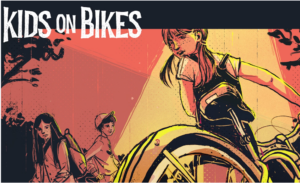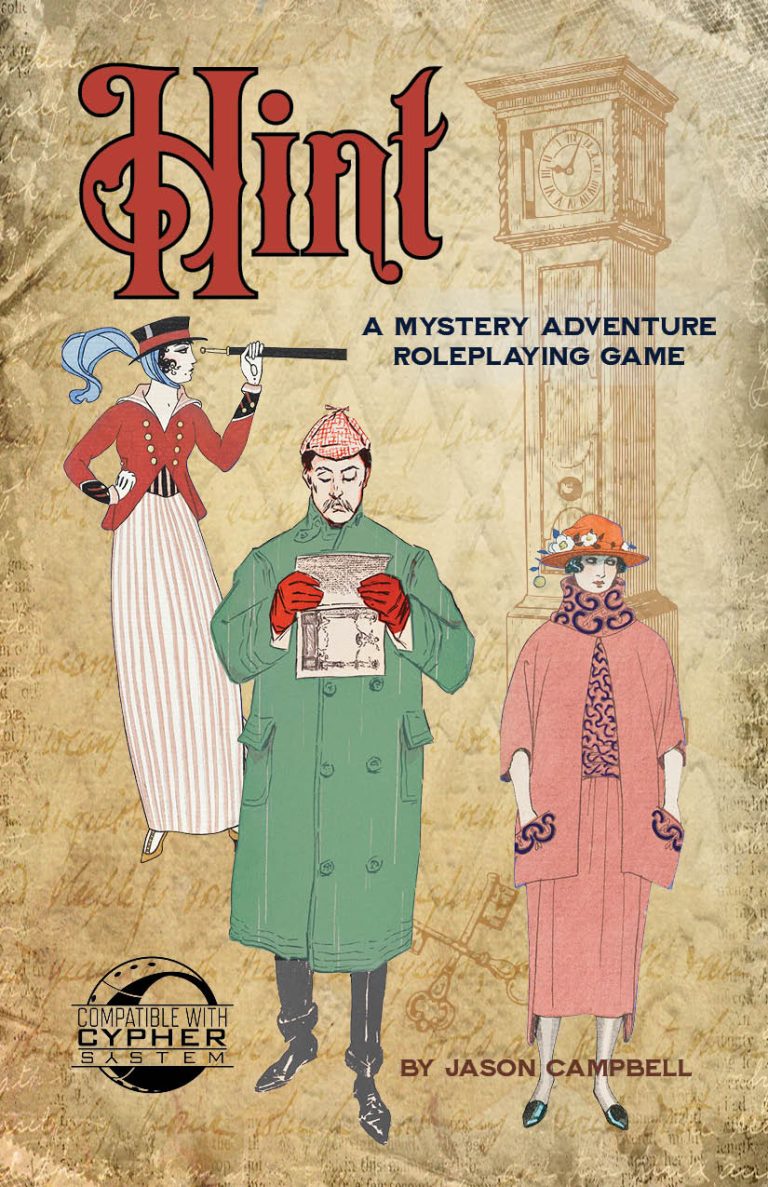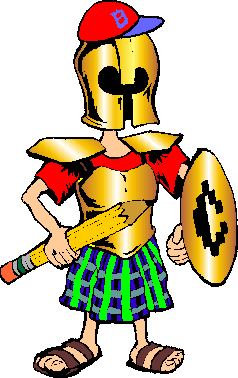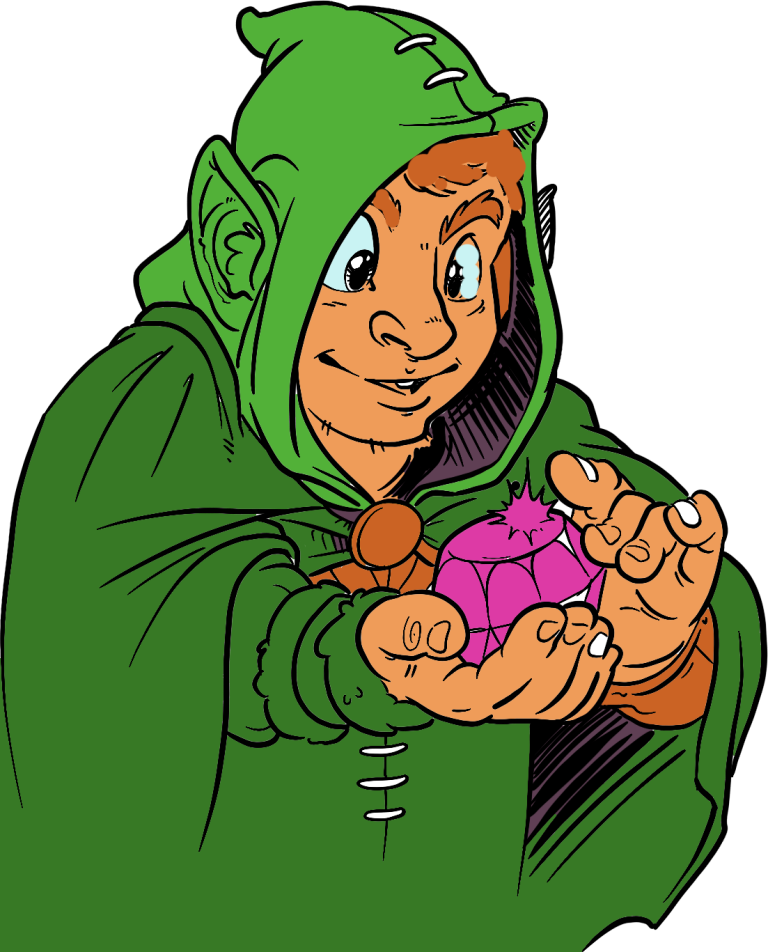By Jason Campbell
NOTE: No products or money were provided in exchange for this review.
Kids on Bikes is a TTRPG created by Jonathan Gilmour and Doug Levandowski, published by Hunters Entertainment and Renegade Game Studios in 2018. The book is available in deluxe hardcover, paperback and PDF. An updated second edition was funded in under an hour earlier in 2023 and should be available shortly. The paperback book is 76 pages in length.

The game has been referred to as “based loosely on Stranger Things”, but it really encompasses a whole genre of media including movies like E.T. and The Goonies. The player characters can be either children, teens, or adults, using tropes like funny sidekick, overprotective parent and popular kid. The characters do not have classes and do not gain levels, and the focus of the game is narrative, so the players and GM share the duty of creating an interesting story cooperatively. It has inspired spin-offs using the same system; Kids on Brooms (students and professors in a wizarding school) and Teens in Space.
The book is extremely well written and edited while being efficient in page count and easy to learn. I would recommend reading it even if you aren’t sure you’ll ever run the game, as the text and system can give you insight into other ways of managing TTRPGs, especially if you’ve only experienced one or two game systems. The book begins not with character creation or “what is an RPG”, but with a section on setting expectations. This is a brilliant section as it gives advice on setting expectations for a game session, while also setting expectations for the book itself.
The book then dives into collaborative worldbuilding. There are a few notes about common aspects that are found in these types of games, but then goes on to suggest that the players help to create the setting as well as the GM. This is put up front in the book again to let new readers know how the game system was written. If you are the type of GM that wants to have control over every aspect of the world, this game is probably not for you. There is a list of suggested questions that can be used to create the world, going around the table asking each player a question “our town is famous for”, “our sports team’s mascot is”. Beginning a session this was is optional but it helps to set the stage for new players that their ideas will matter as much as the GM’s.
The players and GM should decide on the age group of the PCs. You could play as teens, younger children, adults, or a mix of any of those. Characters have 6 ability “scores”; brains, brawn, fight, flight, charm and grit. Character creation lets the players choose from a list of tropes including those mentioned above. These tropes will tell you what “die type” is assigned to which ability. You’ll use each die once: d4, d6, d8, d10, d12, d20, for each ability. The basic mechanic is that each time you attempt something that might fail, the GM assigns a difficulty to that task, a number between 1-20. In order to succeed at the task, you need to roll that difficulty or above on a die associated with whatever ability the GM says is needed for that task. That means if the difficulty is 7 and your related ability is a d4, this will be difficult. But there is the idea of “dice explosions”. In that situation if you roll a 4, you roll again, adding the second roll to the first. You can do this as long as you keep rolling the maximum number on the die, so it’s theoretically possible to succeed on a difficulty 20 task even if your related ability is a d4, it’s just very unlikely.
All the characters here are “normal” people, there’s no superpowers and they don’t cast spells. As mentioned there are no levels, players are assumed to be trying to succeed in creating an interesting story more than gaining power. There are also no hit points or health, although combat is probable. Conflicts are resolved by a character using one ability against a character using another ability, so combat might be fight versus brawn. The result is narrated based on the difference between those rolls, with a table suggesting the severity of the resolution spending on the difference in the rolls. While this is more a narrative game rather than combat heavy, it’s entirely possible for a character to die from a single attack, which encourages the players to take combat seriously.
A defining characteristic in this game is the presence of a “powered” character, someone with strange or magical powers. This is not a player character, but one controlled cooperatively by the players, with each controlling an aspect or two of the powered character. The reason for the powered character’s existence and their personality is often a key to the story.
As mentioned this book is worth reading no matter what game you play. With sections on how to run sessions, how to craft a session, and including neuroatypical, disabled characters and any sort of gender, race, ethnicity or sexuality.
There are two additional books of adventures available for the game as well as a few optional accessories. This game is a breath of fresh air if you’re looking for a new way to look at TTRPG gaming. Check it out from Renegade Game Studios.
Have you played Kids on Bikes? Let us know what you think in the comments below.





